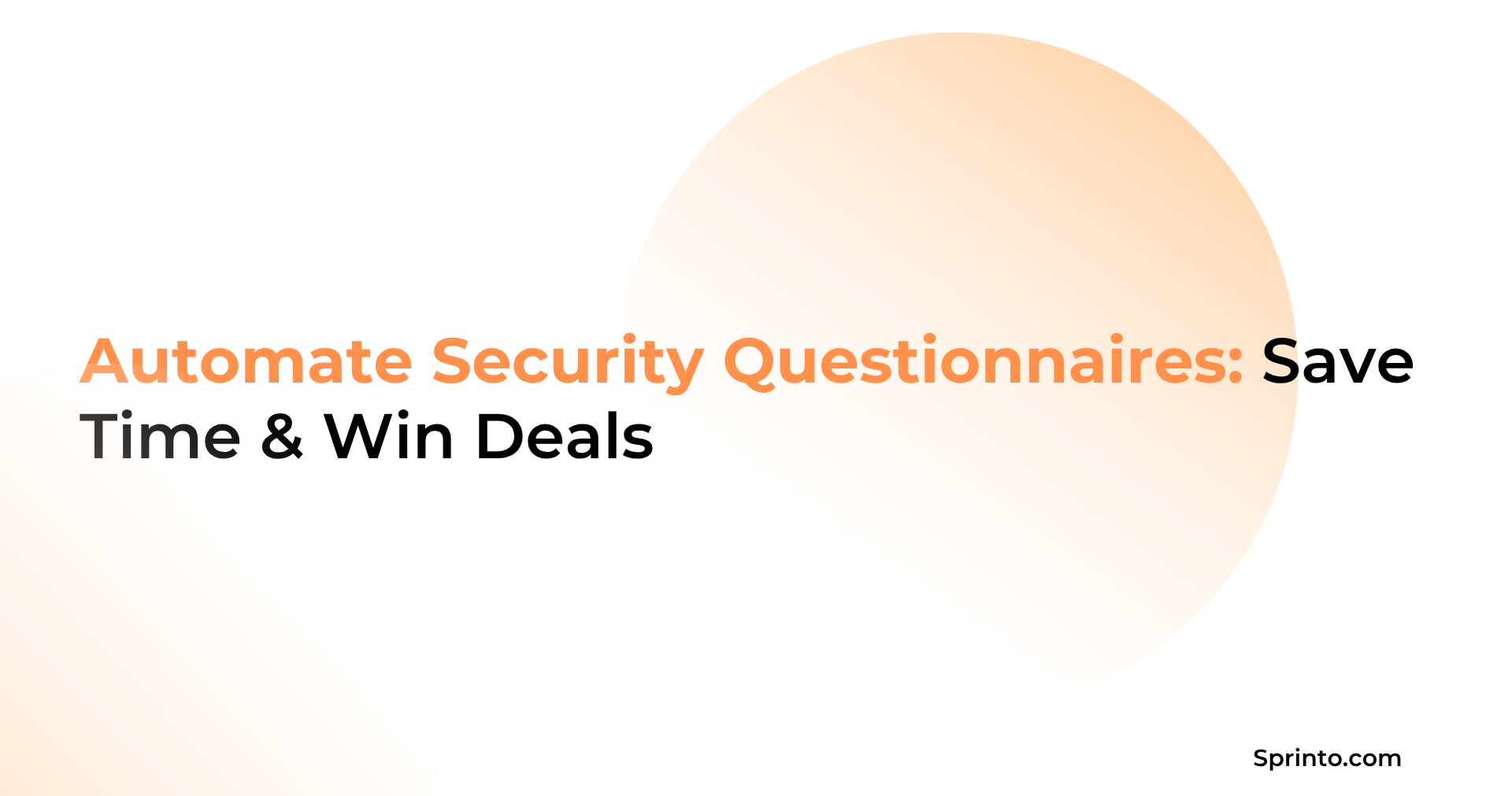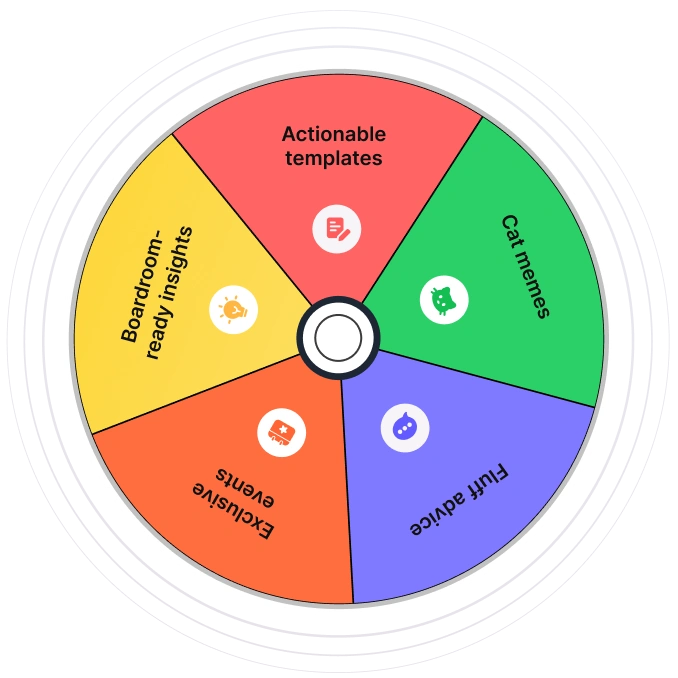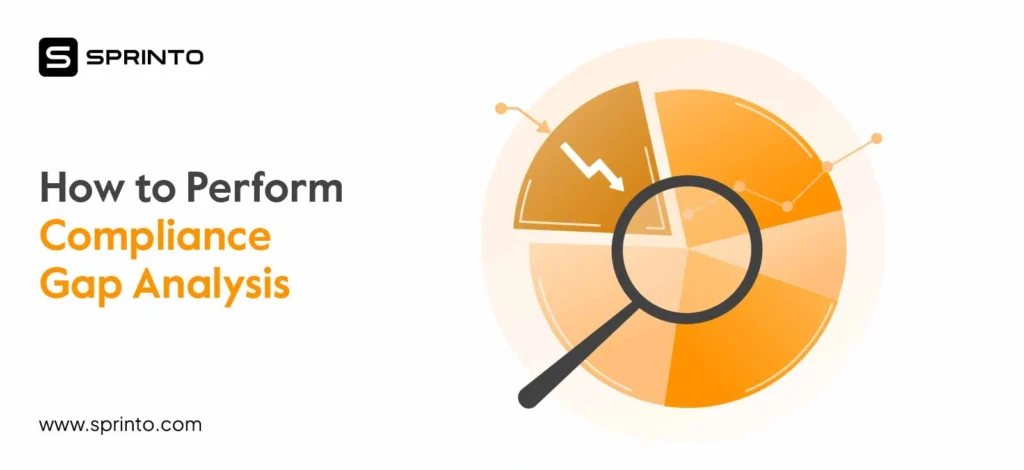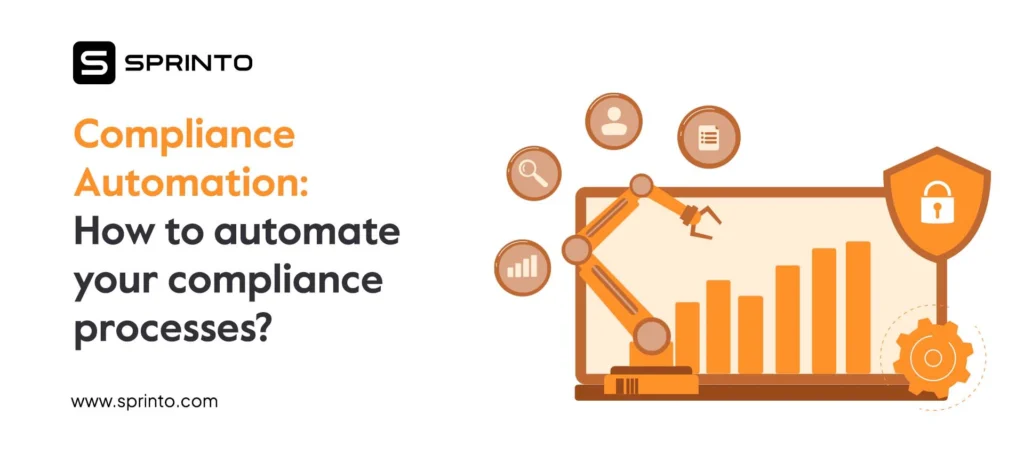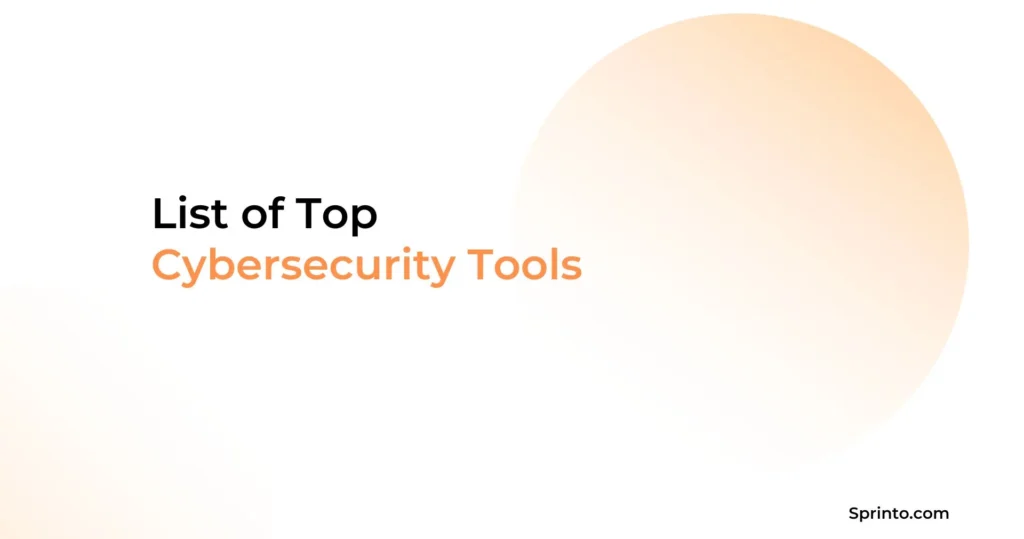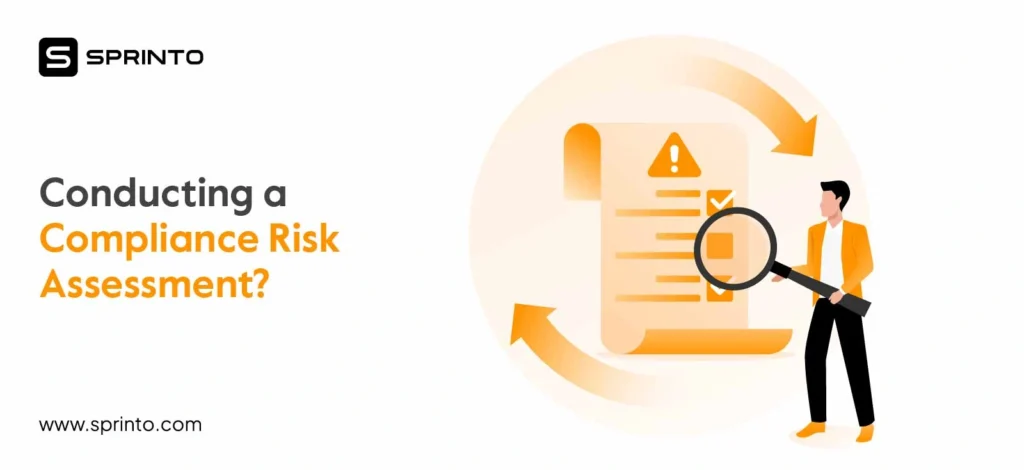If you’re a sales engineer watching deals get delayed by questionnaire responses, a compliance manager drowning in repetitive requests, or a CTO tired of pulling engineers off product work just to answer the same security questions again, you’re not alone. Security questionnaires have become the hidden bottleneck in enterprise sales cycles, and manual processes are killing your momentum.
The good news? You don’t have to choose between speed and accuracy. Smart teams are breaking free from the copy-paste cycle by automating security questionnaire responses in ways that actually work. This isn’t about cutting corners on compliance—it’s about building systems that scale with your business, keep your answers consistent and ready for audits, and free up your best people to focus on what actually moves the business forward. In this guide, we’ll walk you through exactly how to automate security questionnaires without losing quality, which tools actually work, and how to build a process that turns questionnaire requests from deal-killers into competitive advantages.
What are Automated Security Questionnaires?
Automated Security Questionnaires are AI-driven systems that generate accurate, audit-ready responses to vendor and customer security assessments based on real-time compliance data, past responses, internal evidence of policy implementation, and compliance certifications.
These tools intelligently map incoming questions to verified controls, reducing manual effort, eliminating inconsistencies, and accelerating deal velocity. By transforming a traditionally manual bottleneck into a scalable workflow, they help teams improve customer trust, maintain compliance, and win deals faster.
Unlike static templates or response libraries, automated security questionnaires tap into live systems through integrations with your cloud infrastructure, HR tools, code repositories, and device management platforms. This enables dynamic evidence generation, ensures responses reflect your current security posture, and supports multiple compliance frameworks simultaneously. Advanced platforms also include approval workflows, access controls, and audit trails, making them suitable for cross-functional collaboration between sales, security, and compliance teams.
How to Automate Security Questionnaires (Step-by-step)
1. Centralize Your Security Data
Start by building a single source of truth for all your security and compliance artifacts. This includes policies, technical controls, certifications (like SOC 2 or ISO 27001), past audit reports, employee training logs, device inventories, and more. Fragmented data is the top blocker to successful automation, so this is a foundational step.
2. Standardize Your Responses
Manually rewriting answers for every questionnaire leads to inconsistency and compliance risks. Instead, create standardized, reusable response templates for each common framework or security domain—including access control, encryption, business continuity, vulnerability management, and so on.
Ensure these answers are aligned with your actual implemented controls. Misrepresenting your posture, even unintentionally, can open you up to legal and reputational risk. Work with your compliance and engineering teams to validate every response template against real system behavior.
3. Integrate AI-powered Questionnaire Tools
Once you have centralized and standardized your data, connect it to a questionnaire automation tool. Tools like Sprinto, Conveyor, and Vanta can intelligently match incoming questions to pre-approved answers using NLP, machine learning, and rule-based logic.
Look for platforms that not only pull from a static library, but also draw from real-time evidence. Some tools can autocomplete 70–90% of responses using compliance system integrations, drastically cutting down the time your team spends on each questionnaire.
4. Set Up a Review and Approval Workflow
Automation is powerful, but it doesn’t eliminate the need for oversight. Build a review loop that brings in compliance managers or security leads to validate responses before they’re shared with external parties.
Document each step of this process for audit readiness. Use version control, approval logs, and timestamped records to ensure you can show who reviewed what, when, and why. This is critical during enterprise procurement or regulatory scrutiny.
5. Update Continuously
Security posture isn’t static, and your answers shouldn’t be either. Integrate your automation platform with systems of record like HRIS, cloud platforms, MDM tools, and IAM systems to reflect the latest control status and personnel changes.
Set up automated alerts for policy expirations, failing controls, or outdated evidence. This will keep your questionnaire responses current, improve your overall compliance hygiene, and reduce audit surprises.
Turn questionnaires into a revenue accelerator. Book a demo with Sprinto to automate responses with evidence-backed accuracy.
Best Practices for Security Questionnaire Automation
1. Map to Actual Controls
Only respond based on what is currently implemented and verifiable instead of what you plan to roll out next quarter. Overstating your posture can lead to audit failures, contractual disputes, or reputational damage. Many enterprise clients perform detailed follow-ups or validations, and any discrepancy between your answers and actual system behavior could be seen as negligence. Connect your platform to real-time systems wherever possible to automatically map only live, active controls.
2. Keep a Master Response Library
A centralized, continuously updated answer library is essential for speed, consistency, and reducing effort duplication. Organize it by compliance domain (e.g., encryption, identity management) and map responses to relevant frameworks like SOC 2 or ISO 27001. Keeping this library version-controlled ensures you always have a source of truth that aligns with your current posture and policies. This also empowers cross-functional teams to contribute without compromising quality.
3. Audit Everything
Maintain a clear trail of how each response was generated, reviewed, and approved. This should include timestamps, user activity, and previous response versions. When clients or auditors question specific answers, you’ll be able to show exactly how they were handled and by whom. Platforms with built-in version tracking and approval workflows simplify this process and reduce the risk of undocumented changes.
4. Train your Team
Security questionnaires often require collaboration across sales, security, legal, and compliance. If these teams aren’t aligned on what’s implemented, how tools are configured, or what language to use in responses, inconsistency and rework become inevitable. Regularly train teams on your current security stack, approved response templates, and how to escalate unclear questions. A shared playbook or knowledge base can drastically reduce confusion and response time.
Slash response times, eliminate errors, and accelerate enterprise deals with automation.
How Sprinto Helps Automate Security Questionnaires
Security questionnaires are no longer a checkbox exercise. They are trust accelerators in enterprise sales, procurement, and partnership workflows. Done poorly, they slow deals and expose inconsistencies. Done well, they build instant credibility and clear the path to revenue.
Most teams stumble because questionnaires demand speed and accuracy. Copy-pasting generic answers introduces risk. Relying on scattered documents burns time. The result: stalled deals, frustrated sales, and compliance teams stuck in reactive mode.
Sprinto turns security questionnaires from a bottleneck into a self-serve growth lever.
With Sprinto, you can:
- Auto-populate answers using real-time, verified data from your environment (not outdated docs).
- Centralize and reuse responses across multiple questionnaires with consistency and accuracy.
- Leverage 250+ integrations to pull fresh evidence directly from infra, HR, code repos, and devices.
- Stay audit-ready with a dedicated auditor dashboard and evidence presented in compliant formats.
- Enable self-serve completion by sales, compliance, or procurement teams without back-and-forth firefighting.
- Scale across frameworks (SOC 2, ISO 27001, HIPAA, GDPR, PCI-DSS, and more) with mapped controls and pre-approved responses.
This isn’t just automation—it’s context-aware, evidence-backed automation. Every answer is tied to a live control, ensuring responses are not only fast but also precise, defensible, and trustworthy.
The result?
- Response times cut from weeks to hours.
- Zero inconsistency across questionnaires.
- Sales cycles move faster because trust is established upfront.
Sprinto makes it possible to answer confidently at scale, so your team can focus on closing deals instead of chasing answers.
Ready to turn security questionnaires into a strategic advantage? Book a demo with Sprinto and see it in action.
FAQs
To automate security compliance questionnaires effectively, you need a platform that connects directly to your cloud infrastructure, HR systems, and policies to generate real-time, audit-ready responses. This ensures your answers are not only fast but also aligned with your actual compliance posture. Tools like Sprinto make this possible by automating evidence collection and mapping answers to implemented controls across multiple frameworks.
The best way to automate a SOC 2 questionnaire is by using a solution that continuously monitors your controls and auto-generates mapped responses based on your current system configuration. Automation tools like Sprinto are designed to handle SOC 2 requirements end-to-end, reducing manual effort, eliminating inconsistencies, and accelerating time-to-audit with built-in templates and auditor-ready dashboards.
Most advanced tools integrate with your cloud infrastructure (AWS, Azure, GCP), HRIS systems, MDM solutions, code repositories, and more. These integrations pull real-time compliance data such as access logs, encryption status, device posture, and policy acknowledgments. Tools like Sprinto support over 200 native integrations, enabling fully contextual responses backed by live evidence.
Yes, top-tier platforms like Sprinto can handle both standardized questionnaires (like CAIQ, SIG, VSA) and custom formats sent by enterprise clients. They use natural language processing to interpret questions and intelligently match them with mapped responses, evidence, and policies. You can also customize workflows for internal reviews, redlining, or legal approvals to ensure full control over final submissions.
Bhavyadeep Sinh Rathod
Bhavyadeep Sinh Rathod is a Senior Content Writer at Sprinto. He has over 7 years of experience creating compelling content across technology, automation, and compliance sectors. Known for his ability to simplify complex compliance and technical concepts while maintaining accuracy, he brings a unique blend of deep industry knowledge and engaging storytelling that resonates with both technical and business audiences. Outside of work, he’s passionate about geopolitics, philosophy, stand-up comedy, chess, and quizzing.
Explore more
research & insights curated to help you earn a seat at the table.



